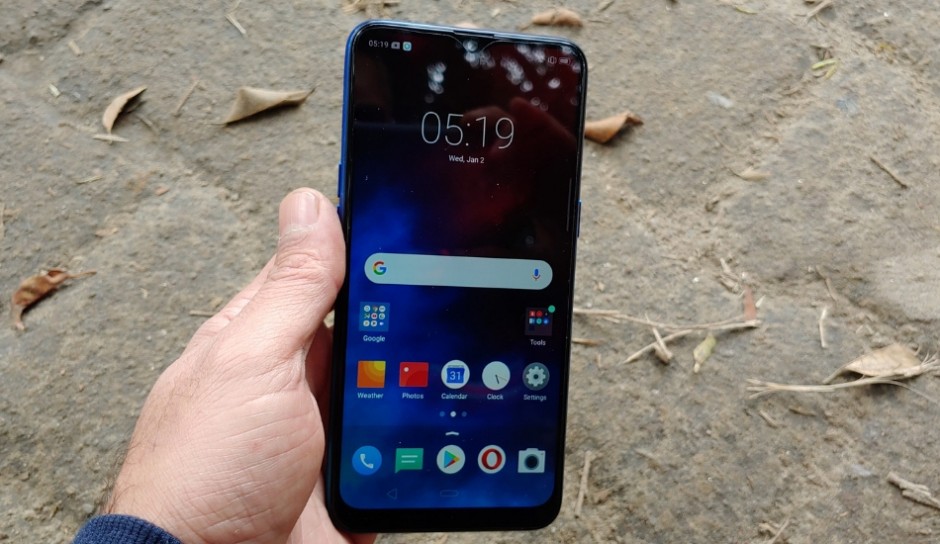Realme has today announced the launch of its latest budget-centric smartphone, the Realme 3, in India. The smartphone comes with a price tag of Rs 8,999 for the 3GB RAM+ 32GB of internal storage, while the 4GB RAM + 64GB of internal storage for Rs 10,999. and it will be available for purchase from Flipkart starting from March 12.
With this, Realme is now eying to capture a sizeable market share of the budget smartphone segment where the things are heating up. However, the final product which we saw is a bit different from what the company promised in the earlier teaser. The first one being the absence of diamond-cut finish on Realme 3, which was teased by the company aggressively. That said, the device still packs decent hardware. So, will Real(ly) make an impact? Let’s find out.
Design and Display

Starting with the design, the company had promised to bring back the diamond-cut finish with the Realme 3. Sadly, the brand skipped it and instead opted for a gradient finish at the back panel. The smartphone is available in Dynamic Black and Gradient Blue colour option. We got the latter for the review and frankly speaking it gives a pretty standard look as compared to other smartphones. The gradient finish comes with a combination of blue and green, which is also present on other smartphones like Honor 8C, Zenfone Max Pro M2, Micromax Infinity N12 and more.
That said, the company has refined its design as compared to its predecessor, the Realme 2. The curved edges make it easier to hold the device. On the downside, the phone is a fingerprint magnet, meaning that you need to keep wiping the screen. A tedious task indeed! Talking about ports placement, the front feature a dewdrop notch at the front and the side bezels are kept minimal. The right features power on/off button, while the right features SIM tray coupled with volume controls. The base of the device still features a micro USB port, which is flanked between speaker grille and 3.5mm audio jack.

The back of the smartphone is equipped with a dual-camera setup aligned vertically at the top-left corner and one can also see a yellow ring on the top camera module. The company has opted for a vertical logo at the base, to give it camera-centric look. That said, there is no new design innovation on the Realme 3, but still, the company has done the basics right.
Coming to the display, the Realme 3 features a 6.2-inch HD+ display with a screen resolution of 1520 x 720 pixels. The phone comes with a screen-to-body ratio of 88.3 per cent and has unnamed Corning Gorilla Glass protection. In our brief testing, we found out that the screen is decent and viewing angles look great. We will talk more about this in our upcoming review.
Hardware and Software

On the hardware front, the Realme 3 is powered by octa-core MediaTek Helio P70 Processor clocked at 2.1GHz. The phone will be available in two colour options including 3GB RAM and 32GB internal storage; and 4GB RAM and 64GB internal storage. The memory can be further expanded up to 256GB via microSD card slot. The new Chipset from MediaTek has a lot to offer and it would be interesting how well it would compete with the likes of Honor 8C, Zenfone Max Pro M2 and more.
On the software part, the Realme 3 is equipped with ColorOS 6.0, which is based on Android 9.0 Pie. This is where things get interesting. The user interface is now more refined and it looks smoother as compared to its predecessor. The company has given the option of an App drawer, which is a welcome change. The animation looks much smoother and we liked the fact the new icons pack from Realme. We will be discussing more about this in our upcoming review.
Camera

On the camera front, the Realme 3 features a dual-camera setup, which comes with a combination of 13-megapixel primary sensor and 2-megapixel secondary shooter. The rear camera offers f/1.8 aperture, 5P lens, LED flash and 1.12-micron pixel size. The front camera is equipped with a 13-megapixel sensor with f/2.0 aperture, 1.12-micron pixel size and AI beautification.
Talking about camera capabilities, the phone a mixed bag results in our brief testing. The shots taken in broad daylight came out to be decent, however, you zoom in the image, you will notice a loss of details. The Night mode in the camera does a slightly better job in adding more light when the scene is dark, however, the detailing does not improve significantly. The selfie camera looks decent in our brief testing. We will talk about this in details in our upcoming review.
Battery and Connectivity

On the battery front, the Realme 3 is juiced up by a 4230mAh battery and there is no option of fast charging. The battery should easily last a day and more, though we are yet to test it out its battery capabilities. Connectivity options include 4G VoLTE, Bluetooth 4.2, WiFi, GPS< GLONASS, micro USB port, Dual-SIM and a microSD card slot.


